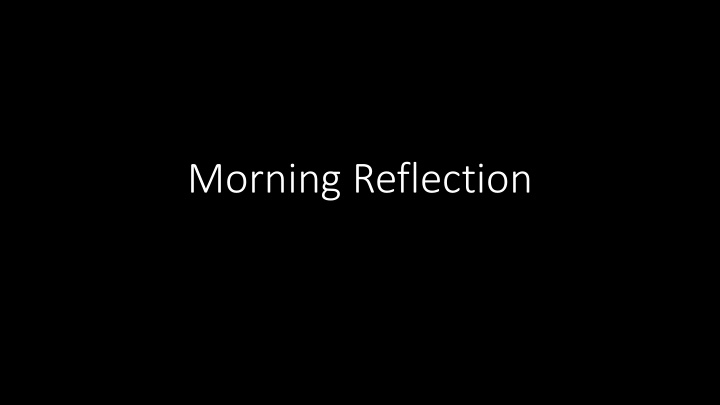



Morning Reflection
Pull out your responses to yesterday’s prompt • What was your main takeaway from service yesterday? • What did you learn as a community member? • What did you learn as an instructor?
What is the DEAL model?
• DESCRIBE objectively • EXAMINE • Personal growth • Civic learning • Academic enhancement • ARTICULATE LEARNING
What is positionality?
Continuum dialogue <- comfortable --------------------------------------------------------------- not comfortable ->
Reflecting on role as instructor • Positionality & vulnerability • Discomfort versus bias
Reflecting on role as instructor • Positionality & vulnerability • Discomfort versus bias • What are you teaching? What is the lens taken in that class, and how will this frame the discussion mode?
Reflecting on role as instructor • Positionality & vulnerability • Discomfort versus bias • What are you teaching? What is the lens taken in that class, and how will this frame the discussion mode? • What is reciprocity?
Practicing your role as the instructor • Get in a group of folks who went to the same service opportunity as you • Recall Larivee's levels of reflection that we discussed yesterday • Based on the class you're teaching this year, what kinds of questions could you ask your students about the service you did yesterday?
Larivee’s levels of reflection 1. Pre-reflection: teacher interprets classroom situations without thoughtful connection to other events or circumstances; is reactive, believing that situational contingencies are beyond the teacher’s control; beliefs and positions about teaching practices are generalized and not supported with evidence from experience, theory, or research 2. Surface reflection: the teacher’s examination of teaching methods is confined to tactical issues concerning how best to achieve predefined objectives and standards; beliefs and positions about teaching practices are supported with evidence from experience, not theory or research 3. Pedagogical reflection: the teacher is constantly thinking about how teaching practices are affecting students’ learning and how to enhance learning experiences; the teacher’s goal is continuously improving practice and reaching all students; reflection is guided by a pedagogical conceptual framework; beliefs and positions about teaching are specific and supported by evidence from experience, as well as being grounded in theory or research 4. Critical reflection: the teacher is engaged in ongoing reflection and critical inquiry concerning teaching actions as well as thinking processes; the teacher consciously considers how personal beliefs and values, assumptions, family imprinting, and cultural conditioning may impact on students; teacher is concerned with promoting democratic ideals and weighs the ethical and social implications of classroom practices Barbara Larrivee (2008) Development of a tool to assess teachers’ level of reflective practice, Reflective Practice, 9:3, 341-360.
Closing CAT • What have you learned about reflection that you will use in your class? • What modes of reflection worked well for you here? How did they serve different purposes, and what were you drawn to?
Recommend
More recommend